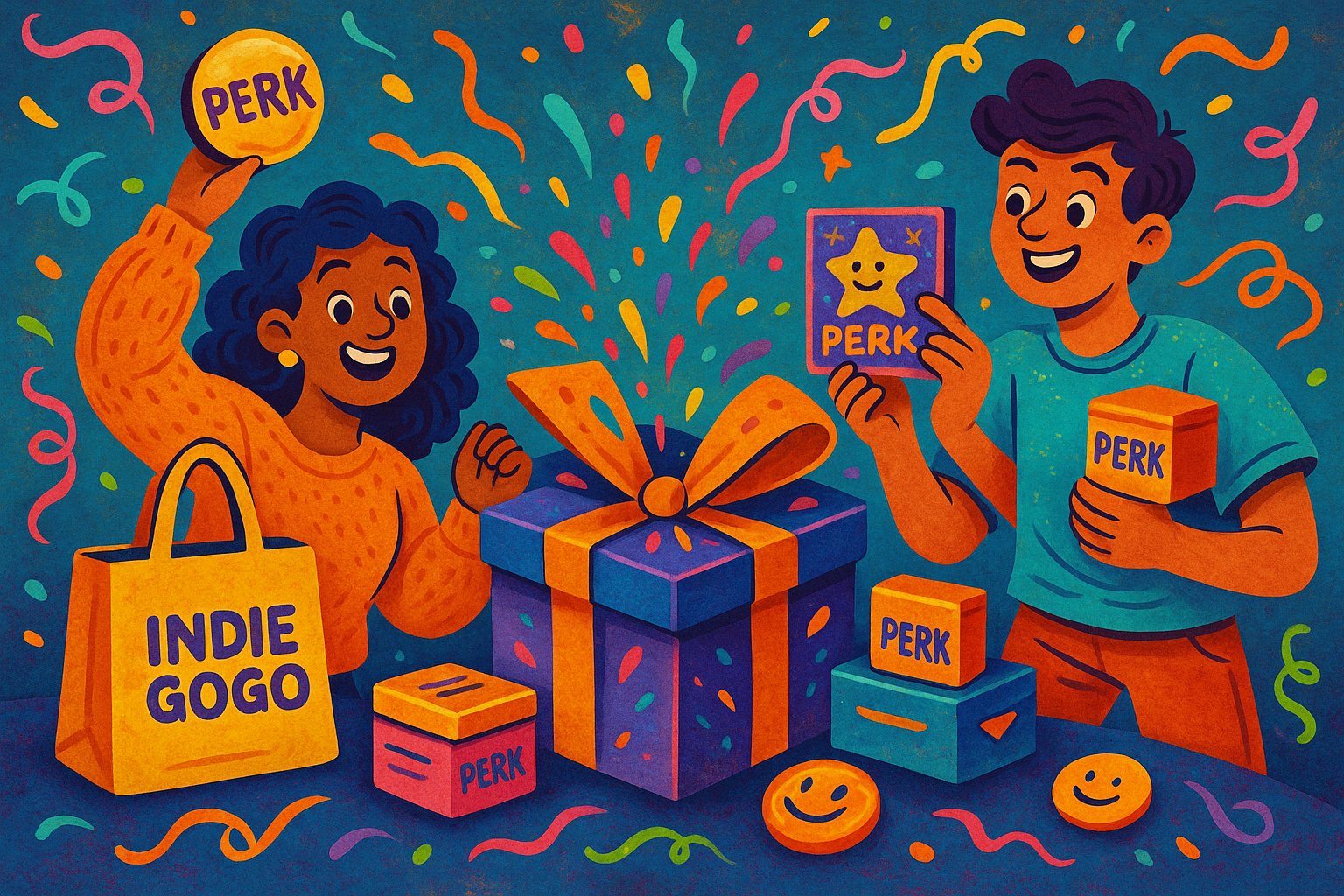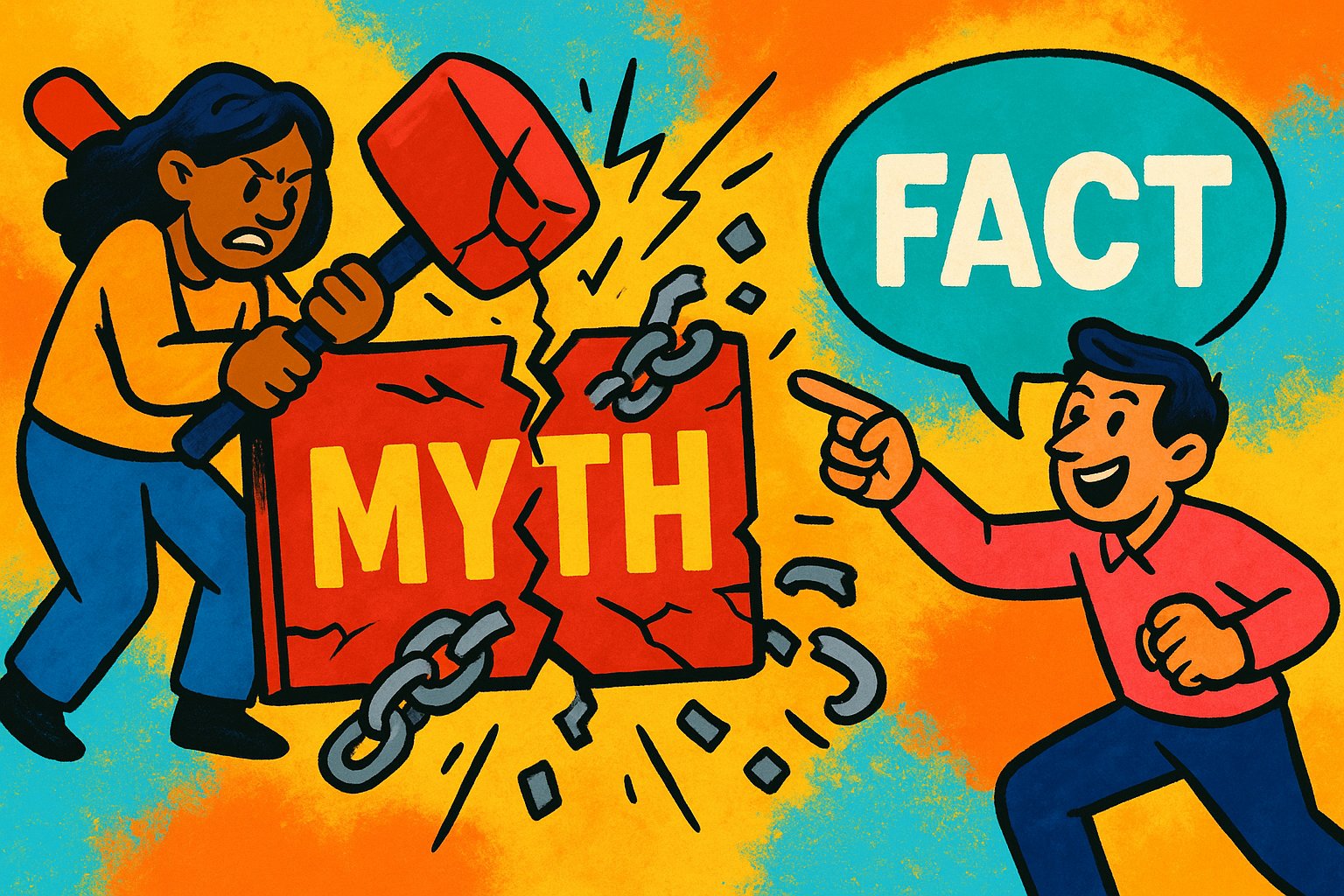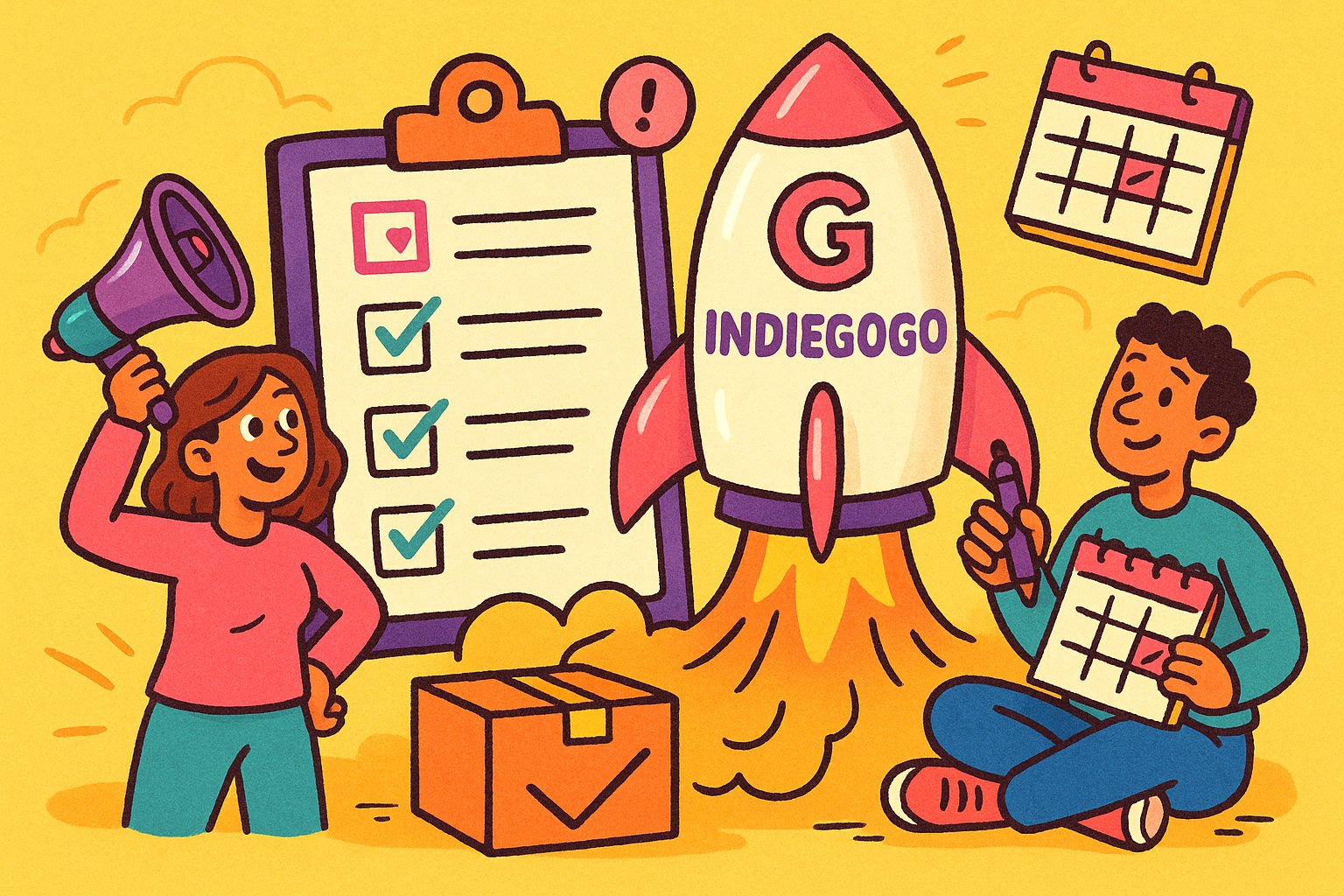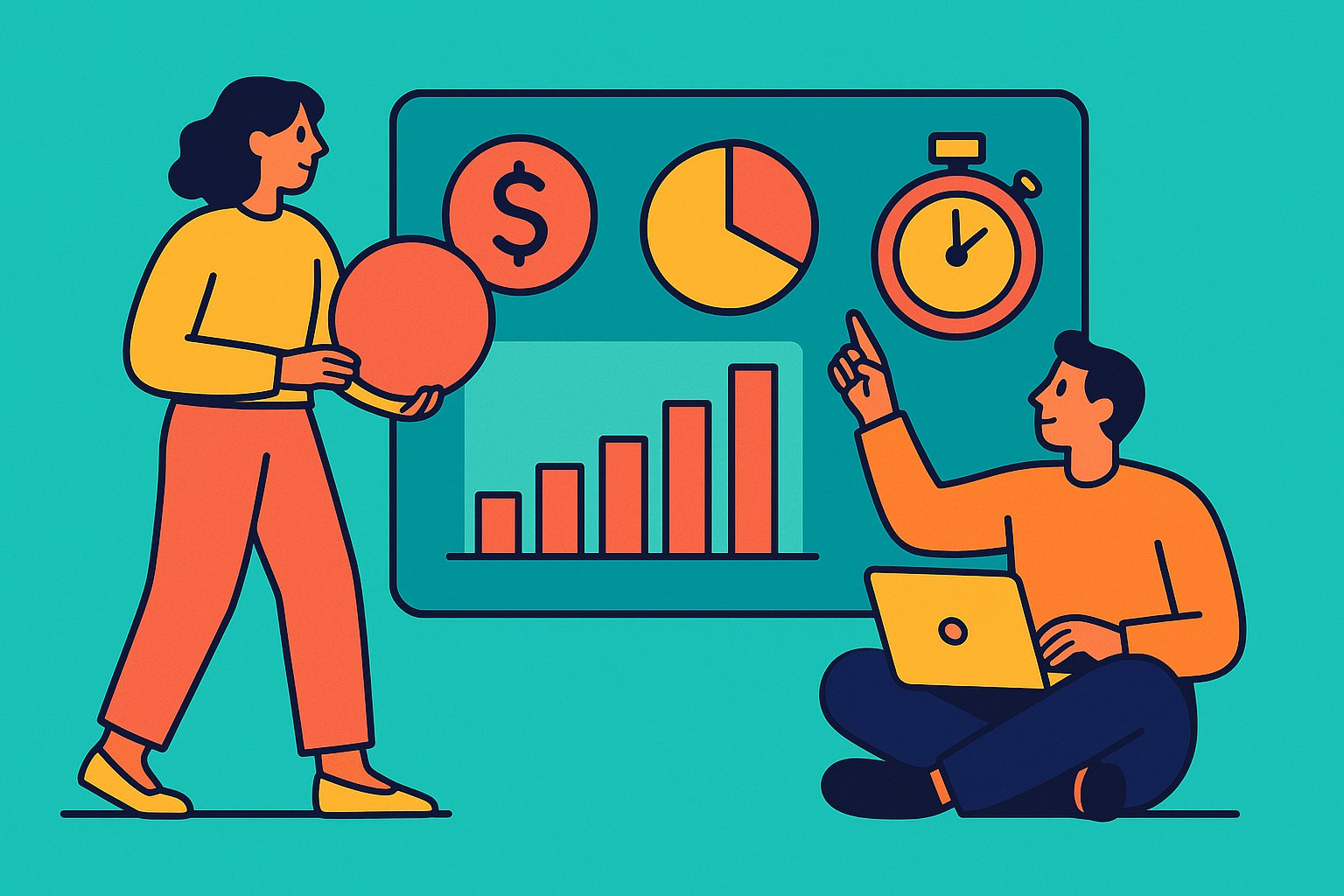Elevating Backer Satisfaction
Launching an Indiegogo campaign means more than just designing a product and setting funding targets; it’s about cultivating a relationship with your backers. From the moment someone clicks “Back This Project” to the exciting arrival of their reward, every touchpoint shapes their perception of your brand. Packaging, in particular, serves as the final bridge between your digital campaign page and the tangible world. A thoughtfully crafted perk package not only protects its contents but also reinforces your brand story, builds anticipation, and creates an unboxing moment that backers will remember—and share. Whether you’re sending out a handcrafted artisan item, a tech gadget prototype, or a limited-edition collectible, how you present that perk can turn a single pledge into lifelong loyalty.
Consider the moment your backer tears through a tape-sealed box to reveal a custom-designed inner sleeve emblazoned with your logo, accented by a handwritten “Thank You” note. That sensory experience—visual, tactile, even olfactory if you include lightly scented tissue paper—transforms a simple reward shipment into a memorable event. In a marketplace flooded with products, packaging is your chance to stand out, to ensure that backers feel valued and to elevate their excitement. It’s also a reflection of your professionalism: sturdy materials, precise folds, and cohesive aesthetics signal that you’ve invested thought and resources into delivering a premium experience. As Indiegogo campaigns progress through stretch goals and additional tiers, packaging can adapt to incorporate new perks—limited-edition stickers, bespoke pamphlets, or bonus add-ons—fostering an ongoing sense of discovery long after the campaign ends.
However, putting together stellar packaging requires striking a balance between creativity, cost, and logistics. You’ll need to navigate material sourcing, graphic design, printing costs, and shipping constraints, all while ensuring scalability as your backer count grows. If you’re shipping internationally, added complexity arises from customs declarations, variable shipping costs, and the need for robust cushioning. The most successful campaigns begin their packaging strategies well before launch: mapping out designs that can evolve with stretch goals, sourcing eco-friendly materials to align with brand values, and building relationships with reliable fulfillment partners. In this comprehensive guide, we’ll dive deep into seven key facets of Indiegogo perk packaging—crafting brand-aligned designs, creating unforgettable unboxing experiences, embracing sustainability, adding personalized touches, managing budgets wisely, navigating international shipping hurdles, and integrating backer feedback post-campaign. By the end, you’ll possess not just a list of ideas but a strategic framework for transforming each pledge shipment into an extension of your brand’s promise.
Brand-Aligned Packaging: Designing Cohesive Visual Narratives
Your packaging should be a seamless extension of the visual identity showcased on your Indiegogo campaign page. From the color palette to typography to illustrative elements, consistency builds recognition and trust. Imagine a backer who first discovers your project through a sleek video that emphasizes minimalist design, muted color tones, and a futuristic font. When they receive a stark white box accented with a matte black logo reflecting those same design cues, it feels as though the entire experience has been choreographed. This sense of cohesion reassures backers that they’re dealing with a brand that cares about every detail, not just the product itself.
Start by developing a mood board that captures your campaign’s core themes—whether that’s eco-conscious innovation, handcrafted artistry, or cutting-edge technology. Translate those themes into packaging elements: choose a box material that aligns with your brand values (recycled kraft paper for sustainability, or glossy rigid cartons for premium presentation). Design an outer sleeve or wrap that features your logo prominently, accompanied by a tagline or campaign motto that reinforces your mission. Inside, consider using a custom-printed tissue paper or an inner sleeve that repeats a key graphic motif from your campaign page. The goal is to create layers of brand immersion: from the moment the backer spots the shipping label in their mailbox to the final reveal of the perk itself, every visual cue should feel intentional and on-brand.
When selecting printing methods, weigh offset printing for large runs against digital printing for smaller, more agile batches. Offset printing offers crisp, vibrant color reproduction and is ideal if you anticipate shipping hundreds or thousands of units. Digital printing, however, allows you to test multiple packaging prototypes—perhaps printing a limited run of three different color variants to gauge backer preferences—before committing to a full-scale production run. This flexibility can be especially valuable if your campaign includes stretch goals that modify packaging elements or introduce new branding accents. By anchoring your packaging design in a well-defined visual narrative that mirrors your Indiegogo campaign aesthetics, you forge a stronger emotional connection with backers, signaling that their support fuels a cohesive brand experience rather than a one-off purchase.
Crafting Unforgettable Unboxing Moments: Elevating the Reveal
Unboxing has become a cultural phenomenon, with millions tuning in to watch influencers unveil the latest gadgets, collectibles, and beauty products. Your Indiegogo perk packaging can tap into this excitement by delivering an unboxing sequence that backers feel compelled to share. Start by planning a multi-layered reveal: a sturdy outer box conceals a branded wrap or sleeve, which then hides an inner box or tray featuring carefully nestled components. Perhaps the outermost layer bears only your logo and a cryptic tagline—teasing backers—and once they slip it off, a secondary message reads, “Thank you for making this dream possible,” printed in the same font as your campaign videos. The anticipation builds with each layer peeled back.
Inside, focus on presentation and protection. Use custom-fit cardboard inserts or molded pulp trays that cradle each perk component—minimizing movement during transit and ensuring that backers receive pristine items. If your perk includes multiple pieces—say, a tech device, a detachable accessory, and a small booklet or certificate—arrange them in a visually balanced layout. Border each item with contrasting tissue paper or colored crinkle-cut paper that complements your brand palette. Attach a personalized note—ideally printed on high-quality cardstock—that thanks the backer by name and references their pledge level, whether they’re an early bird pledger or a multi-unit supporter. This handwritten-style note need not be a lengthy essay; a few sentences that reflect genuine gratitude can transform the mundane act of unpacking into a heartfelt exchange.
Consider adding surprise elements that reinforce backer engagement. Include a limited-edition sticker, a postcard featuring exclusive artwork, or a small pamphlet with behind-the-scenes insights into your creative process. For instance, if you’re unveiling a photography project, slip in a 4×6-inch print of an unreleased photo that only campaign backers receive. If you’re delivering a handcrafted board game, tuck in a glossy rulebook with concept sketches from your design archives. These unexpected touches—delivered within the same package—extend the unboxing moment, encouraging backers to share photos and reviews on social media. By thoughtfully orchestrating each layer of the unboxing journey, you create a multisensory experience that resonates long after the physical components are unpacked, transforming ordinary shipping into a brand-defining event.
Embracing Eco-Friendly Packaging: Aligning Sustainability with Brand Values
In an era when consumers increasingly evaluate brands based on environmental responsibility, eco-friendly packaging can amplify your campaign’s credibility and broaden its appeal. Sustainable materials need not compromise on aesthetics or durability; in fact, they can enhance perceived value when presented thoughtfully. Start by sourcing recycled cardboard for your outer boxes—materials that still offer structural integrity and a clean print surface. If you choose a natural kraft finish, leverage that texture to evoke authenticity and eco-consciousness, pairing it with soy-based ink for your logo and graphics to reduce the use of petroleum-derived inks.
Inside the package, consider biodegradable cushioning solutions—molded pulp trays, recyclable paper shred, or compostable cornstarch-based packing peanuts—rather than traditional plastic bubble wrap or Styrofoam. These materials not only protect your perks during transit but also allow backers to dispose of packaging responsibly after unboxing. For inner sleeves or tissue paper, choose plant-based or FSC-certified papers that carry recognized sustainability certifications. If you include printed collateral—pamphlets, stickers, or postcards—opt for post-consumer waste (PCW) paper that communicates your environmental ethos. When designing these materials, highlight your commitment to sustainability: a brief note on each printed insert can outline your eco-friendly choices—“All paper used in this package is 100% recycled and printed with vegetable-based inks”—reinforcing transparency.
Beyond materials, adopt minimalistic design principles to reduce waste. Instead of multiple layers of packaging for every tier, create modular inserts that can be adjusted based on perk complexity. For campaigns with multiple reward levels, use standardized box sizes where inner dividers or inserts can be added or removed to accommodate different items—minimizing the need for excessive void fill. If you anticipate a broad geographic distribution of backers, work with suppliers who can source materials locally to decrease transportation emissions. Consider partnering with fulfillment centers that specialize in carbon-neutral shipping or employ renewable energy in their warehouses. By embedding sustainability into each facet of your packaging strategy—from material selection and design to logistics and fulfilment—you not only reduce environmental impact but also signal to backers that your brand lives its values, fostering deeper loyalty among eco-conscious supporters.
Personalization Techniques: Crafting Custom Connections
Personalization cultivates a sense of exclusivity and belonging, transforming a transactional perk into a bespoke gift. Even small gestures—like addressing backers by name—have an outsized impact. Start by designing tier-specific packaging elements: if backers choose higher pledge levels, include a unique color accent on their box—a metallic silver ribbon for Platinum backers or a vibrant teal tissue paper for Gold-tier supporters. This visual differentiation makes each package feel tailored to the individual’s level of commitment. On the inside flap of the box, print each backer’s name alongside a short message: “Dear [First Name], thank you for being our founding supporter!”
Consider integrating a personalized card or insert in each package. Handwritten notes can be challenging to scale, but digital printing allows you to generate customized messages at relatively low cost if you prepare a template that pulls from a backer list. Craft a warm, conversational tone—no need for lengthy passages; a heartfelt “We appreciate your belief in our vision” resonates more than generic thank-you copy. For higher-tier backers, include a laminated perk card or certificate numbered according to their pledge sequence, making them feel part of a limited cohort. If your perk includes multiple items—perhaps a gadget, a branded tote, and a postcard—consider printing each backer’s name on at least one item. For example, a small sticker bearing their username can be affixed to the tote, reinforcing the sense that this package was assembled specifically for them.
Personalization extends to packaging inserts that invite backers to co-create the future of your project. Include a custom-branded survey or feedback postcard, pre-addressed and stamped, inviting recipients to share insights on product improvements or new feature ideas. If budget allows, offer backers the option to select from a few design motifs—color choices, patterns, or personalized initials—during the pledge process, and reflect that selection in their packaging. For instance, if a backer selects an “Ocean Blue” variant, the packaging can feature a coordinating blue interior sleeve or a foil-stamped wave pattern. By embedding personalized touches—from custom messages to tier-specific accents—you elevate packaging from mere protection to a meaningful dialogue that recognizes each backer’s unique role in bringing your vision to life.
Budget-Friendly Strategies: Delivering Impact without Breaking the Bank
While premium packaging elements delight backers, cost control remains crucial—especially for small campaigns or projects on tight budgets. The key is to identify high-impact, low-cost tactics that amplify perceived value without inflating expenses. One straightforward approach is to utilize bulk wholesale options for boxes and labels. Instead of ordering custom-printed boxes in small quantities, source plain, high-quality mailer boxes in standard dimensions and apply custom-printed sleeves or labels to convey your branding. These sleeves—crafted from cost-effective matte or semi-gloss cardstock—slide over the plain box, creating a premium look while leveraging the affordability of unbranded boxes.
Another tactic is to focus on a few signature design elements rather than customizing every packaging component. For instance, choose one standout feature—like a uniquely designed inner liner or a single sticker printed in metallic foil—that draws attention and sets the tone. Pairing that specialty item with more economical bulk elements—such as plain tissue paper in a brand-aligned color—maintains cohesion without overextending the budget. Similarly, consider multi-functional inserts: a single cardstock card can serve as a thank-you note, care instructions, and a branded keepsake, replacing the need for separate pamphlets or flyers. Consolidating printed collateral into a single tri-fold or postcard-size insert reduces printing costs while still conveying essential information.
Leverage economies of scale when negotiating with suppliers: even modest increases in order quantities can yield significant cost savings. If your campaign projects 500 backers, ask vendors for quotes at 600 or 700 units to understand incremental savings per unit. Many printers and packaging manufacturers offer tiered pricing that makes bumping up quantities worthwhile. Don’t hesitate to explore local print shops or regional fulfillment centers; sometimes, smaller vendors provide more competitive rates and flexible order minimums than large national providers. Another cost-saving strategy is to repurpose existing materials: perhaps you have surplus branded stationery from a previous launch, or you can repurpose prototype packaging with minor tweaks. Finally, consider enlisting volunteers or interns for manual assembly tasks—folding boxes, inserting thank-you cards, and applying stickers—especially if your team is passionate about the project. By prioritizing a few high-visibility packaging elements, embracing scalable production methods, and negotiating cost breaks on bulk orders, you deliver an unforgettable unboxing experience without undermining your financial projections.
Shipping Savvy and Global Delivery: Ensuring Safe Passage Worldwide
No matter how stunning your packaging, its journey across postal networks can be treacherous—particularly when shipping internationally. The last thing you want is a precious backer package arriving dented, soaked, or half-opened due to inadequate packaging strength. Start by selecting sturdy, corrugated cardboard mailers rated for your product’s weight class. If your perk contains multiple components or fragile electronics, invest in inner protective materials—bubble wrap, foam inserts, or molded pulp trays—that cradle each item securely. For heavier packages, upgrade to double-wall corrugated boxes to withstand stacking and rough handling during transit. Always factor dimensional weight pricing into your logistics plan; oversized but lightweight boxes may incur higher shipping costs than you anticipate. Measure the length, width, and height of your packaging, and compare the dimensional weight calculation against the actual weight to determine the most cost-effective box size.
International shipments bring added complexity. Customs declarations must clearly list item contents, quantities, and declared values; inaccurate or incomplete customs forms can result in delays or returned packages. Be transparent on the shipping label: avoid generic descriptions like “merchandise,” and instead specify “electronic gadget prototype” or “collector’s edition art print.” For backers in regions with strict import regulations—such as the European Union, Australia, or Japan—consider pre-negotiating duties and taxes, or explicitly inform backers that they may incur additional fees upon delivery. In some cases, working with regional fulfillment centers—third-party logistics providers that stock inventory closer to backer concentrations—reduces shipping costs and delivery times. If 30% of your backers reside in Europe, for instance, shipping a pallet of packages to a European fulfillment partner can slash per-unit shipping costs and bypass customs headaches.
For long-distance shipments, include clear instructions on how to handle returns or exchanges. Provide pre-printed return labels or a concise return policy card inside each package, explaining steps for claiming damaged items. Consider tracking every package with a reliable courier that provides end-to-end transparency—this reassures backers and allows you to monitor delivery performance. If a package goes missing, proactive communication—such as sending a replacement or partial refund—demonstrates dedication to backer satisfaction. When possible, research region-specific packaging practices: certain countries favor rigid, box-style shipping over padded envelopes, while others appreciate water-resistant packaging during monsoon seasons. By tailoring your shipping strategy—selecting the right materials, optimizing box dimensions, preparing accurate customs documentation, and leveraging regional fulfillment partners—you ensure that your carefully crafted packaging arrives intact, preserving the unboxing magic even in the face of global logistics challenges.
Cultivating Backer Feedback: Evolving Packaging Excellence Post-Campaign
Once every package has been dispatched and your products are in the hands of backers, the journey shifts to reflection and continuous improvement. Soliciting feedback on packaging provides insights for future iterations—what delighted backers, what fell short, and where opportunities for refinement lie. Shortly after delivery, send a brief email survey asking backers about their unboxing experience: Was the outer box sturdy? Did the inner materials protect the product adequately? How did they feel about the personalized notes or inserts? Offer an incentive—perhaps a small discount code for your next campaign or store purchase—to encourage detailed responses. Pull metrics from social media as well: monitor mentions and unboxing videos to gauge genuine reactions. Positive feedback, like backers showcasing their “shelfie” with your branded box in the background, reinforces which elements truly resonated; negative feedback—such as torn edges or excessive void fill—pinpoints core issues to address.
Combining quantitative data (survey scores, return rates due to damage) with qualitative insights (backer testimonials, social media posts) creates a 360-degree view of your packaging performance. If multiple backers note that the product’s protective foam was insufficient, explore alternative cushioning materials—molded pulp, air pillows, or biodegradable packing chips. If eco-conscious supporters express appreciation for your recycled boxes but lament the lack of color vibrancy in printing, consider upgrading to a higher-grade recycled stock that still accommodates vibrant inks. For campaigns that span multiple tiers, track packaging feedback by tier level—perhaps Deluxe Tier backers expect cloth drawstring bags alongside their goods, while Basic Tier backers prioritize timely delivery over unboxing theatrics. Use these insights to refine reward tiers, adjust packaging costs in your next campaign’s budget, and communicate these improvements in subsequent project launches. When backers see you listen and evolve—“We heard your feedback about torn edges, so we upgraded to double-walled boxes”—it reinforces trust and encourages long-term support.
Finally, consider cultivating an ongoing packaging community—invite enthusiastic backers to join a closed Facebook group or Slack channel dedicated to product development and packaging ideation. Host live sessions where you brainstorm new packaging prototypes, review sample mock-ups, or co-design limited-edition swag. This co-creative approach not only yields fresh ideas but strengthens your relationship with backers, transforming them from mere supporters into collaborative partners. As you plan future Indiegogo campaigns or direct-to-consumer product drops, these early adopters—having witnessed their packaging feedback taken to heart—become brand ambassadors who promote your vision within their own networks. By embedding packaging feedback loops into your post-campaign strategy, you create a virtuous cycle of continuous improvement, ensuring each subsequent unboxing experience surpasses the last and cements your brand’s reputation for excellence.
Packaging as a Pillar of Long-Term Brand Loyalty
Indiegogo perk packaging is more than a logistical necessity—it’s a multifaceted brand touchpoint that can catalyze enduring loyalty. When backers receive a meticulously designed, brand-aligned package that reflects thoughtful craftsmanship, a commitment to sustainability, and personalized appreciation, they don’t simply receive a reward; they become part of your story. Every unboxing moment—augmented by eco-friendly materials, layered reveals, and custom inserts—becomes a shareable memory that sparkles across social media feeds, extending your campaign’s reach beyond its initial timeline.
But packaging excellence extends far beyond a single project; it underpins your brand identity in the minds of your community. When subsequent campaigns arrive with equal—or greater—packaging innovation, backers recognize your consistency and dedication to crafting premium experiences. This consistency builds trust, drives word-of-mouth referrals, and fuels repeat support, turning one-off backers into lifelong champions. By investing in packaging strategies that blend creative design, sustainable materials, personalized touches, cost-effective production, and shipping savvy, you lay the groundwork for a resilient brand. As your Indiegogo journey unfolds, each package sent becomes more than a delivery—it becomes a chapter in a larger narrative of shared passion, mutual respect, and uncompromising quality. Build each package as though it were a gift to a friend, and you’ll discover that backers return not only for your products but for the emotional connection that your packaging helps forge.




